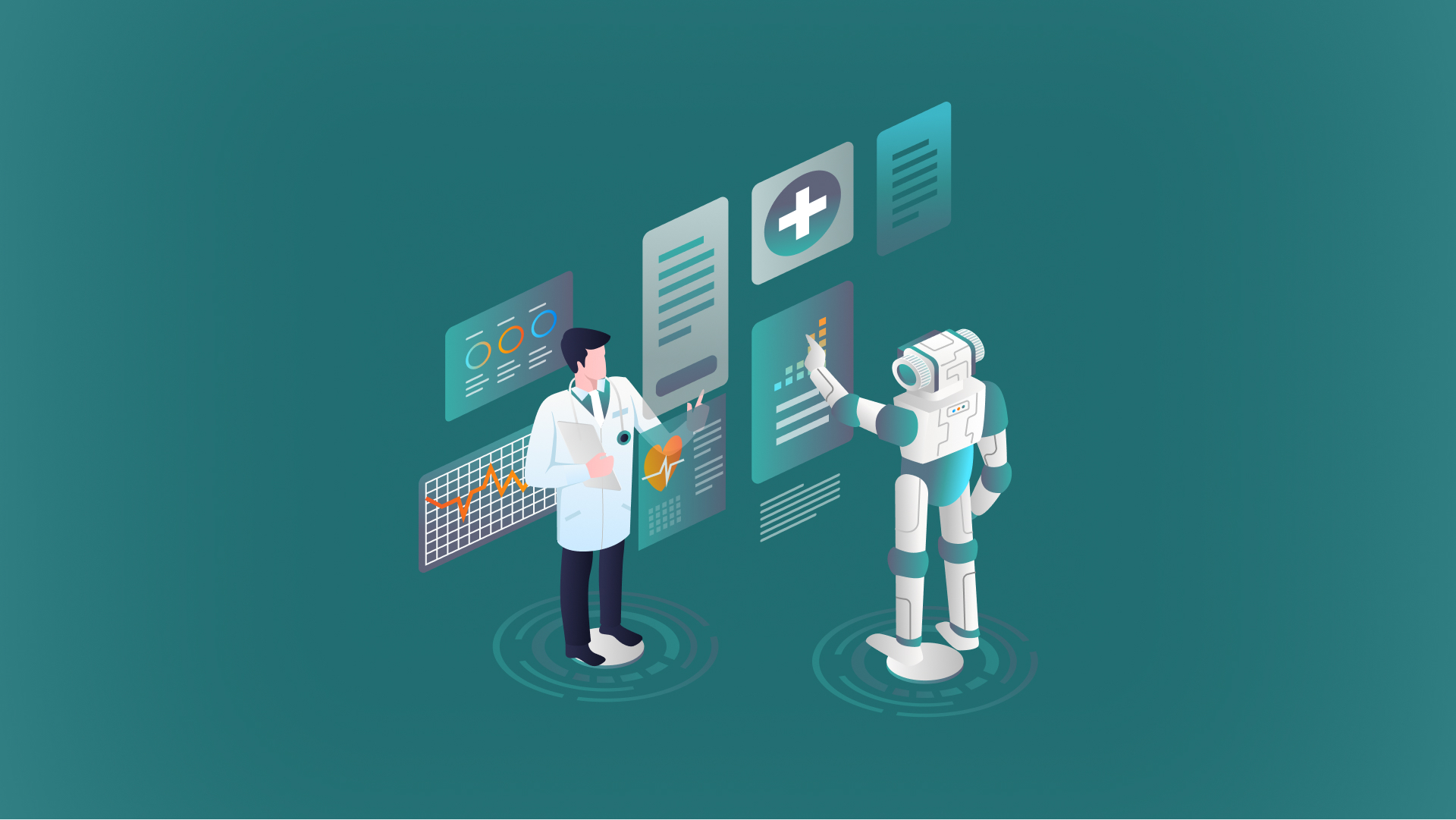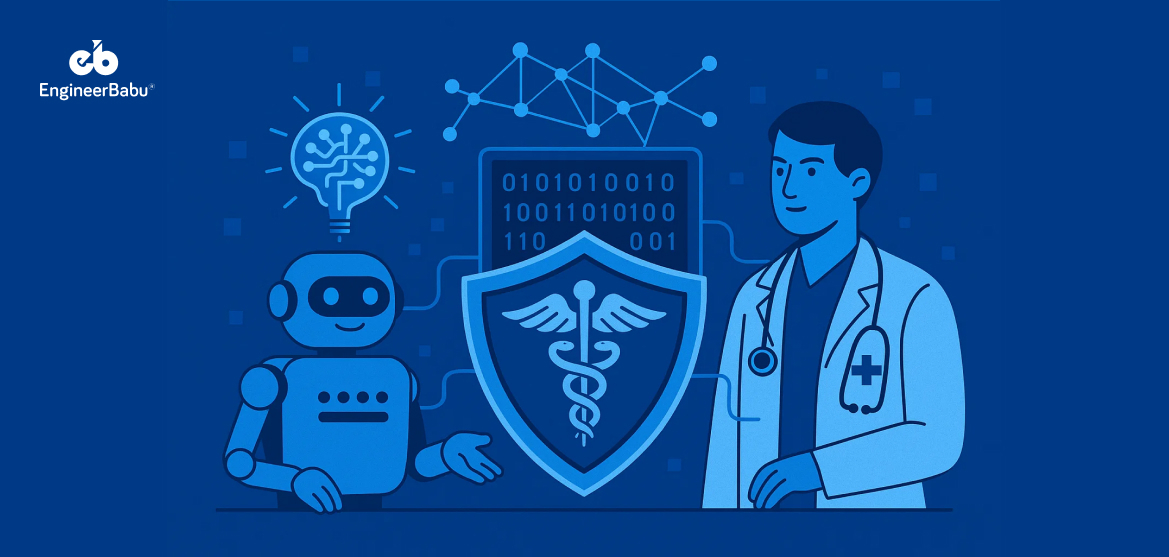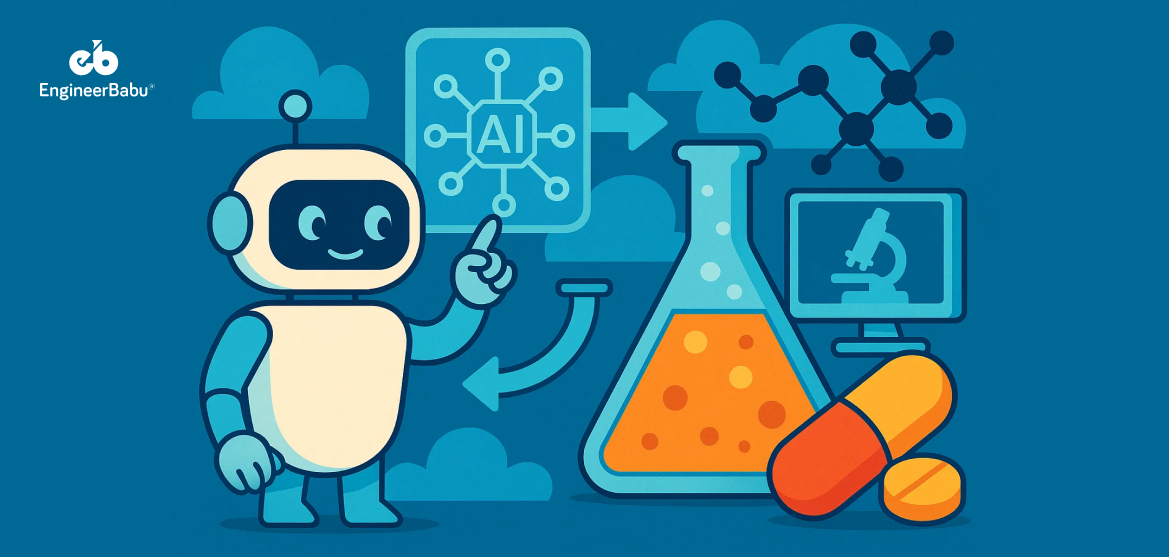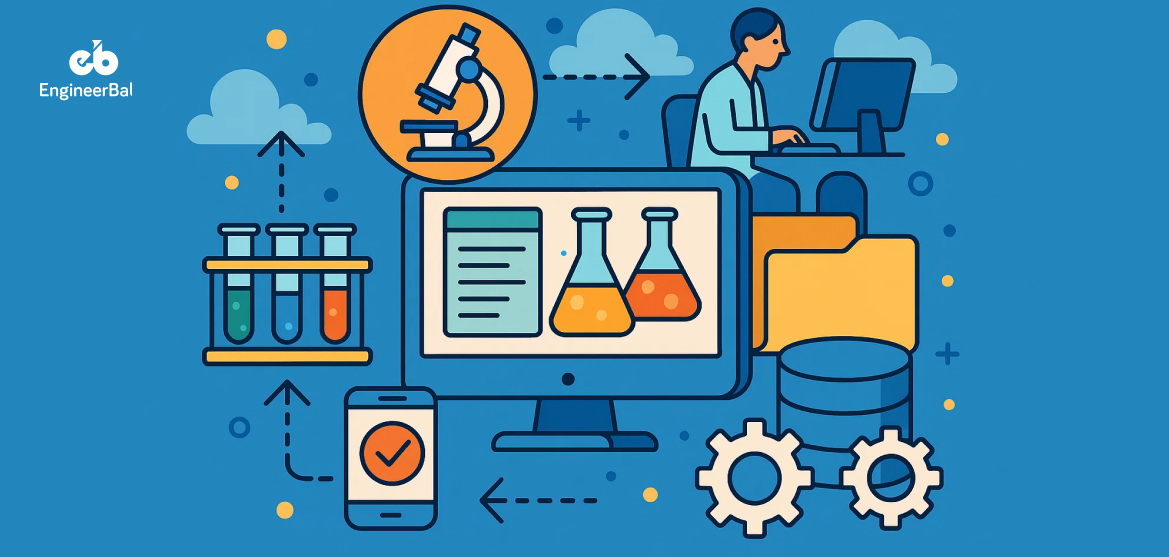Here’s something most founders don’t like hearing: your healthcare app isn’t slow because of dev speed, and it’s not underperforming because of budget. It’s probably just not smart enough yet.
That’s what the numbers are telling us.
Healthcare apps that use AI are pulling ahead—fast. They’re reducing diagnostic errors by 30%, slashing patient no-show rates with AI nudges, and flagging high-risk patients before nurses even walk into the room. And get this—AI-powered apps are expected to power $102 billion worth of healthcare workflows by 2027.
This isn’t about adding a chatbot and calling it “intelligent.” It’s about giving your app the ability to think, learn, and act—without a human in the loop 24/7.
In this post, we’re breaking down 9 real AI use cases that are already working in the field—from diagnostics to drug discovery to workflow automation. These aren’t theoretical. These are battle-tested use cases you could build or integrate right now.
9 Real-Life AI Use Cases in Healthcare App Development
AI-Powered Diagnostics
AI can now spot diseases faster—and sometimes more accurately—than human doctors.
That’s not just a headline. It’s real, and it’s happening in production apps. AI is being used to detect cancer, heart disease, diabetic retinopathy, and more—often in seconds. A study showed that AI models matched radiologists in interpreting breast cancer screenings with up to 94.5% accuracy.
One of the most talked-about tools? IBM Watson for Oncology. It analyzes clinical data and medical literature to help recommend cancer treatments. There’s also Aidoc, an AI tool used by hospitals to flag strokes and internal bleeds in CT scans in under five minutes.
Why it works in apps:
- Cuts down diagnosis time
- Reduces human error
- Scales expert-level insights across clinics and regions
Virtual Health Assistants
Your users don’t want to call a clinic. They want answers now—and AI can give them that.
Virtual health assistants, powered by AI, are reshaping how patients interact with healthcare apps. These assistants can answer questions, assess symptoms, schedule appointments, and even remind patients to take their meds.
One example? Ada Health. Their AI-powered symptom checker has over 12 million users and can suggest possible conditions after asking the user a series of medical questions. It’s like a triage nurse, but one that never sleeps.
There’s also Mayo Clinic’s AI chatbot, which saw a surge in usage during the COVID-19 pandemic. It handled more than 300,000 interactions per day, helping users navigate symptoms and get care advice without overwhelming call centers.
Why it works in apps:
- Cuts down patient wait times
- Frees up staff from routine queries
- Makes apps feel more responsive and personalized
It’s not just chatbots either. Voice assistants that transcribe patient interactions or route them to the right department? That’s AI—and it’s becoming the new normal.
Remote Patient Monitoring (RPM)
AI is helping doctors keep an eye on patients—even when they’re not in the hospital.
Remote Patient Monitoring combines AI with wearables and mobile apps to track vitals like heart rate, blood pressure, blood glucose, oxygen levels, and more. The magic happens when AI jumps in to detect patterns or catch early warning signs that humans might miss.
Take Biofourmis, a healthtech unicorn using AI to monitor patients with chronic conditions. Their platform analyzes continuous data streams and can predict hospital readmissions up to 7 days in advance. That’s a game-changer for managing heart failure, COPD, and post-surgical recovery.
Another great example is Luscii, which works with hospitals in Europe and uses AI to monitor vital signs remotely. It reduced emergency admissions by 30% in a pilot program.
Why it works in apps:
- Reduces hospital visits and readmissions
- Allows care teams to intervene early
- Keeps chronic patients safer at home
Predictive Analytics for Patient Risk
Imagine knowing who’s likely to land in the ICU—days before it happens. That’s what AI is doing right now.
Predictive analytics uses historical data—like EMRs, lab results, medication history, and even social determinants of health—to forecast patient risk. We’re not just talking about risk scores anymore. We’re talking about real, actionable predictions.
Cera Care, a UK-based home healthcare provider, uses AI to predict if an elderly patient is likely to fall sick within the next 7 days. With this tech, they cut emergency hospital visits by 52% and reduced care costs by 35%. Their model analyzes everything from blood pressure trends to behavioral patterns like missed meals or reduced movement.
On the hospital side, Johns Hopkins developed a predictive AI system called PANDA that flagged early signs of sepsis up to 6 hours before symptoms were visible—giving doctors a critical head start in treatment.
Why it works in apps:
- Helps care teams triage smarter
- Reduces avoidable hospitalizations
- Enables proactive care for high-risk patients
For apps handling chronic care, elder care, or post-discharge patients, predictive risk analytics can be a standout feature—and a serious value-add.
Medical Imaging & Diagnostics
Medical imaging is one of the most advanced areas of AI in healthcare. AI models now analyze MRIs, CT scans, X-rays, and ultrasounds with incredible speed and accuracy. They’re flagging tumors, fractures, lung diseases, and even early signs of stroke—all in real time.
One standout example is Zebra Medical Vision. Their AI reads radiology scans and detects dozens of conditions, including breast cancer and brain bleeds. It has been deployed across hospitals in the U.S., Europe, and Asia. Zebra claims its AI can read scans 60% faster than radiologists and has already processed over 2 million scans globally.
Another is MONAI (Medical Open Network for AI)—an open-source framework built specifically for medical imaging. It’s used by developers to train custom imaging models, and hospitals use these models to detect issues that might not be caught during a rushed manual review.
Why it works in apps:
- Accelerates diagnostics
- Reduces human error
- Helps underserved areas with fewer radiologists
Personalized Treatment Recommendations
One-size-fits-all doesn’t work in healthcare—and AI finally gives us a way to fix that.
Personalized treatment is about more than just using a patient’s name. It’s about using their unique data—medical history, genetics, lifestyle, comorbidities—to recommend treatments that are more likely to work for them.
Take K Health, for example. Their AI-driven app analyzes thousands of similar patient cases to recommend treatments or direct users to doctors. The app uses data from over 2 billion anonymized medical records and clinical guidelines. It’s like having a doctor that’s read every textbook and seen every case.
Another major player is Tempus, which combines AI with genomic data to personalize cancer treatment. Their models suggest therapies based on how patients with similar genetic markers responded—helping oncologists tailor their decisions.
Why it works in apps:
- Improves patient outcomes with data-backed decisions.
- Builds user trust through tailored care plans.
- Enables real-time updates to treatment as new data rolls in.
AI-Driven Drug Discovery
AI is cutting years—and millions of dollars—out of drug development.
Traditionally, bringing a new drug to market takes about 10–15 years and can cost over $2.6 billion, according to the Tufts Center for the Study of Drug Development. AI is helping shave that timeline down by predicting which compounds are most likely to succeed—before any human steps into a lab.
Take Atomwise, for instance. They use AI to analyze molecular structures and predict how different chemicals will interact. Their algorithms can screen over 16 billion compounds in days, speeding up the early discovery phase dramatically.
There’s also BenevolentAI, which identified a potential drug candidate for COVID-19 in just four days—a process that typically takes months. The drug went into clinical trials almost immediately.
Why it works in apps:
- Shortens research timelines
- Lowers R&D costs
- Helps smaller pharma and biotech startups stay competitive
If your healthtech product touches pharma, clinical research, or medtech, AI in drug discovery is a feature worth exploring—or at least preparing for.
Workflow Automation (e.g. Scribing, Billing)
Doctors didn’t go to med school to spend half their day typing notes. But that’s what most of them do.
Healthcare professionals spend nearly 50% of their time on documentation and administrative tasks, according to a study by the American Medical Association. That’s where AI-driven workflow automation comes in.
Abridge is a perfect example. It’s an AI medical scribe that listens to patient visits and generates clinical notes in real time. It can transcribe with over 90% accuracy, summarize key points, and even structure data for EMRs.
Another one is Suki, which lets doctors dictate notes and uses AI to automatically organize them by SOAP format (Subjective, Objective, Assessment, Plan). Physicians using Suki report saving an average of 1.5 hours per day.
Why it works in apps:
- Reduces physician burnout.
- Speeds up documentation and billing.
- Increases time spent with patients—not paperwork.
Mental Health Support
Mental health needs help. AI is stepping in where the system falls short.
With the global mental health crisis growing, apps are filling the care gap—and AI is powering many of them. AI can track mood, detect early signs of depression, offer coping tools, and even simulate therapeutic conversations.
Take Wysa, a mental health app that uses an AI chatbot trained in cognitive behavioral therapy (CBT). It’s been downloaded over 4.5 million times and has shown clinical effectiveness in reducing anxiety and depression symptoms. Users open up to the AI more often than to humans, thanks to the 24/7 anonymity and zero judgment.
Another example? Youper, which uses AI to guide users through emotional check-ins and deliver CBT interventions in real time. Studies show users experience a 28% reduction in depressive symptoms within the first two weeks.
Why it works in apps:
- Scalable support for users who can’t access therapy.
- Reduces the stigma of seeking help.
- Collects valuable behavioral data for personalized care.
Integrate AI in Your Own Healthcare App
You’ve seen what AI can do. Now the real question is—how do you build it into your own product?
Whether you’re building from scratch or scaling an existing app, integrating AI isn’t just about hiring a data scientist. You’ll need the right architecture, clean and structured data, domain-specific models, and clinical validation. It’s a lot—and most U.S. healthtech companies aren’t staffed for it.
This is why a growing number of U.S. healthtech companies are outsourcing AI development to India. Not for cost savings (though that helps), but because India has become a powerhouse for AI-backed healthcare solutions. Think 50,000+ AI engineers, strong clinical data annotation pipelines, and teams who already speak HL7, FHIR, and HIPAA.
Engineerbabu is an IT service provider in India that specializes in AI, machine learning, and healthcare compliance. Our development teams understand FHIR, HL7, ICD-10, and the FDA’s AI/ML SaMD framework. They’ve worked with U.S. companies, know HIPAA inside and out, and can help you ship features fast—with fewer risks.
Conclusion
AI in healthcare is no longer about experimentation—it’s about execution. From identifying high-risk patients before symptoms appear to reducing hospital readmissions through real-time monitoring, these use cases are solving real clinical problems.
They’re improving outcomes, lowering costs, and closing the gaps in access and efficiency that healthcare has struggled with for years. For healthtech leaders, the opportunity now is to move beyond ideas and into implementation.
That means understanding the right use cases, aligning them with patient and provider needs, and building with speed and clinical integrity. The teams who get this right won’t just keep up—they’ll lead.
FAQs
How do I know which AI use case is right for my healthcare app?
Start by looking at the core problem you’re solving—diagnosis, engagement, monitoring, or operations. Then assess your data quality, target user (patients or providers), and what decisions need automation. Match that with proven use cases already working in similar environments.
What are the key compliance requirements when building AI for healthcare?
If you’re in the U.S. market, HIPAA is non-negotiable. If your app handles clinical data, you may also need to consider HL7, FHIR, and FDA guidance on Software as a Medical Device (SaMD). Always bake compliance into your architecture early—retrofits are expensive.
Can I outsource AI development and still meet HIPAA and security standards?
Yes, if your outsourcing partner has prior experience with healthcare applications. Ensure they have signed BAAs, use secure development environments, encrypt data at rest and in transit, and follow access control best practices. Vetting the team’s healthcare track record is key.
What’s the average timeline to build and deploy an AI feature in a healthcare app?
Simple AI features (like chatbots or appointment predictors) can go live in 4–6 weeks. More complex systems (like diagnostic AI or predictive analytics) may take 3–6 months, depending on data readiness, model training, and regulatory validation.
Can Engineerbabu build AI-powered healthcare apps for my company?
Yes. Engineerbabu is a healthcare app development company that connects you with top-tier engineering teams in India, experienced in building AI-driven features like diagnostics, remote monitoring, and workflow automation. These teams understand HIPAA, FHIR, HL7, and other healthcare standards. Whether you’re starting from scratch or upgrading an existing product, Engineerbabu helps you move fast with the right technical and compliance-ready expertise.




